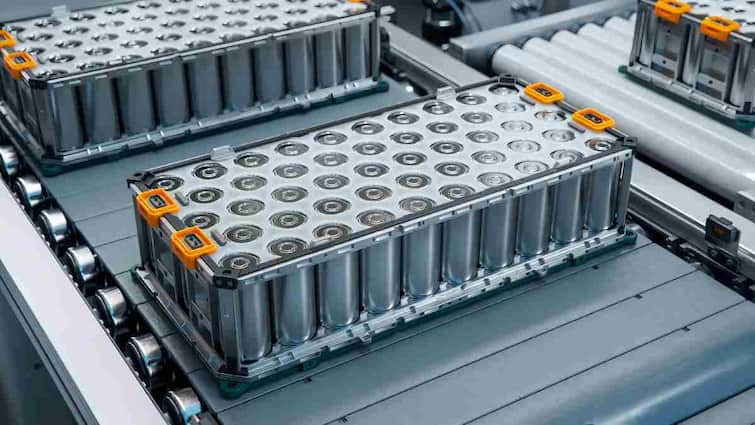Huawei EV Battery: Huawei has created a stir in the world of electric vehicles. The company has disclosed a new EV battery technology that has a theoretically charged capacity to run up to 3,000 kilometers and can be fully charged in just 5 minutes. This technique has been revealed through a new patent filed in China, which talks about an advanced solid-state battery design and fast charging.
Battery prepared on this technique
This battery of Huawei uses nitrogen-doped sulfide electrodes, which aims to reduce the decline in battery performance over time. The company claims that the energy of this battery can range from 400 to 500 wh/kg which is three times higher than the existing lithium-ion batteries. The mid-size EV car from this level energy density can cover a distance of 3,000 km, without charging it again.
However, this 3,000 km figure of Huawei is based on CLTC (China Light-Duty Vehicle Test Cycle), which is often known to show better figures than real situations. If it is measured at more strict standards like EPA in America, then this figure can come at about 2,000 kilometers, which is still far better than the existing EVS.
Is this technique really practical?
It is not enough to make such a big battery, it is also a big challenge to fit it in the car and keep the cost related to it balanced. If this technique of Huawei is used at its maximum capacity, then the weight of the battery can be as much as a small hatchback car. This can also affect the cost-mushroom of EVS, which was making them popular till now.
It would be more practical that companies use this technology to make small and light battery packs, even though the range is 800 to 1,000 km, they maintain balance between both price and performance. This will not only reduce production costs, but will also improve EVS’s driving dynamics and user experience.
EV technology future
Solid-state batteries have been considered the next major jump of energy storage for a long time. However, Huawei is not the only company that is working in this direction, but this technique will be useful only when it proves to be scalable (broad produceable), inexpensive and easy to integrate.
This patent of Huawei gives us a glimpse of a future where electric vehicles can prove to be more convenient than traditional petrol-diesel cars. But the real challenge will be to bring this technique in reality, in the budget and according to the needs of the people. Until the charging infrastructure, price and use habits change, the range of 3,000 km can remain just a technical imagination.
Also read:
From Samsung to OnePlus! These tremendous smartphones will hit entry in India this month, this one will be very stylish

